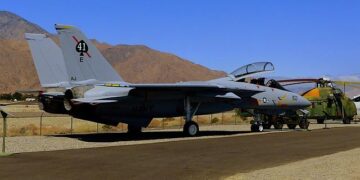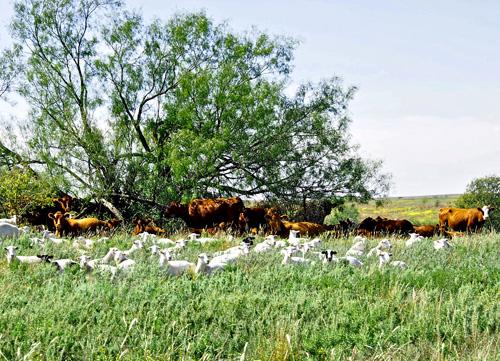As livestock producers seek innovative ways to boost productivity and sustainability, multi-species grazing is gaining traction as a game-changing approach to pasture management. By integrating different types of grazing animals-such as cattle, sheep, and goats-farmers can optimize forage use, enhance soil health, and reduce parasite burdens. In this article, Beef Magazine delves into the science behind multi-species grazing, exploring how this practice can unlock the full potential of pastures and reshape the future of beef production.
Unlocking Soil Health Through Diverse Grazing Practices
Incorporating a variety of grazing species offers a dynamic approach to soil regeneration, fostering a more resilient pasture ecosystem. Different animals target distinct plant species and soil layers, promoting a balanced root structure and enhancing nutrient cycling. This diversity stimulates microbial activity, which plays a critical role in breaking down organic matter and releasing essential minerals back into the soil. Moreover, multi-species grazing helps reduce parasite loads and prevents overgrazing by distributing pressure evenly across pastures.
Key benefits of diverse grazing systems include:
- Improved soil organic matter content
- Enhanced water infiltration and retention
- Increased biodiversity both above and below ground
- Reduced need for synthetic fertilizers
| Grazing Species | Targeted Vegetation | Soil Impact |
|---|---|---|
| Cattle | Grasses and broadleaves | Stimulates fibrous root growth |
| Sheep | Legumes and forbs | Enhances nitrogen fixation |
| Goats | Woody brush and shrubs | Reduces invasive species |
| Horses | Coarse grasses | Improves soil aeration |
Enhancing Livestock Performance with Strategic Species Mixes
Integrating different livestock species within a shared grazing system can substantially boost the overall productivity of pasturelands. By carefully selecting complementary species-such as cattle, sheep, and goats-ranchers optimize forage utilization across varied plant types. Each species exhibits distinct grazing preferences and behaviors, leading to a more balanced consumption of grasses, broadleaf plants, and shrubs. This targeted grazing reduces competition for resources and controls invasive species, ultimately enhancing the quality and resilience of the pasture ecosystem.
Key benefits of strategic species mixtures include:
- Improved nutrient cycling through diverse manure distribution
- Reduction of parasite loads by disrupting host-specific life cycles
- Extended grazing seasons by exploiting different plant growth timelines
- Increased weight gain and reproductive performance in livestock due to higher quality forage
| Species | Preferred Forage | Typical Weight Gain (lbs/month) |
|---|---|---|
| Cattle | Cool-season grasses | 30-50 |
| Sheep | Forbs & legumes | 15-30 |
| Goats | Shrubs & brush | 20-35 |
Practical Steps to Implement Multi Species Grazing on Your Farm
Successful integration of multiple livestock species begins with understanding their distinct grazing behaviors and nutritional needs. Start by selecting complementary animal combinations-such as cattle with sheep or goats-that utilize different forage types, reducing competition and improving pasture utilization. Before introducing new species, assess your pasture composition and fencing infrastructure to ensure compatibility and prevent overgrazing. Implement rotational grazing schedules tailored to each species, allowing for pasture recovery and promoting diverse plant regrowth. This adaptive approach not only balances forage consumption but also controls parasites naturally, cutting down on chemical treatments.
Practical steps involve:
- Pasture mapping: Identify high and low productivity zones for strategic grazing placement.
- Incremental introduction: Introduce new species gradually to monitor interactions and pasture impact.
- Enhanced fencing systems: Use movable electric fences to adjust grazing areas efficiently.
- Regular monitoring: Track animal health and pasture condition with a grazing log.
| Species | Preferred Forage Type | Grazing Height (inches) | Optimal Stocking Density (AUs/acre) |
|---|---|---|---|
| Cattle | Grasses | 4-6 | 1.0 |
| Sheep | Broadleaf forbs & Grasses | 2-4 | 5.0 |
| Goats | Woody brush & Forbs | 1-3 | 3.0 |
Wrapping Up
As the beef industry continues to seek sustainable and profitable grazing strategies, multi-species grazing emerges as a scientifically backed approach to maximizing pasture potential. By leveraging the complementary grazing behaviors of different livestock species, producers can enhance forage utilization, improve soil health, and boost overall herd performance. Continued research and on-farm experimentation will be key to refining these practices and unlocking their full benefits. For beef producers aiming to balance productivity with environmental stewardship, multi-species grazing offers a promising path forward.































